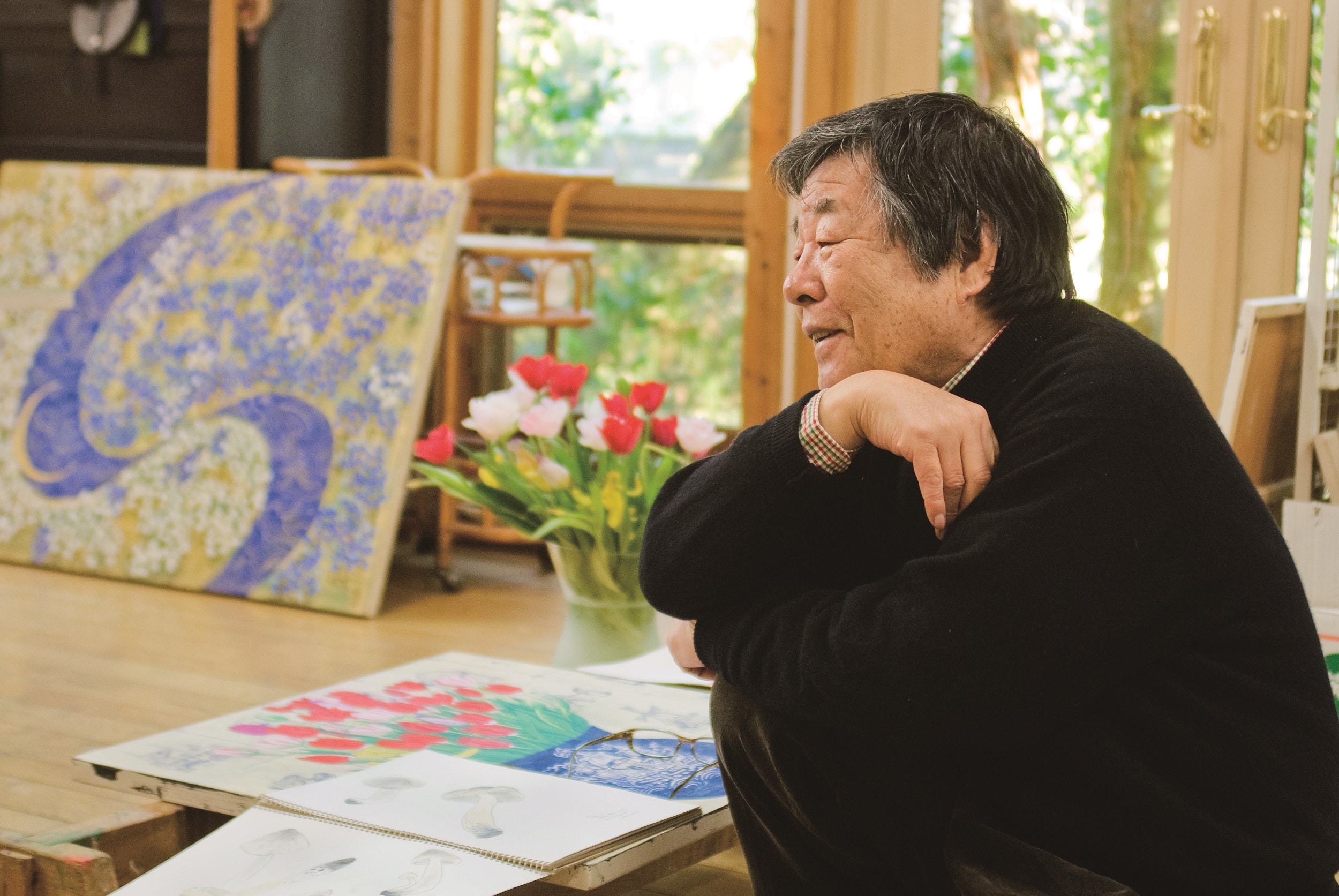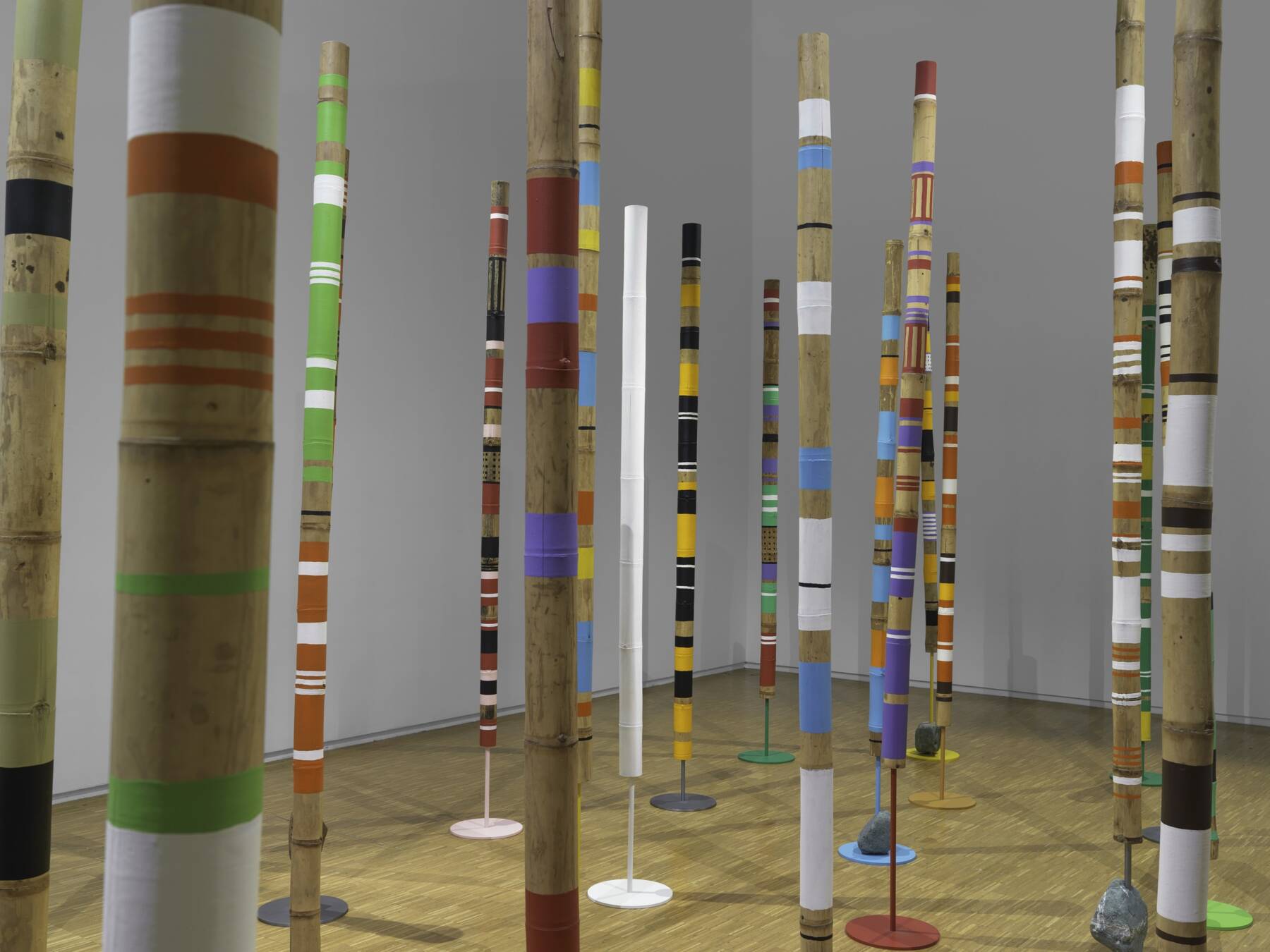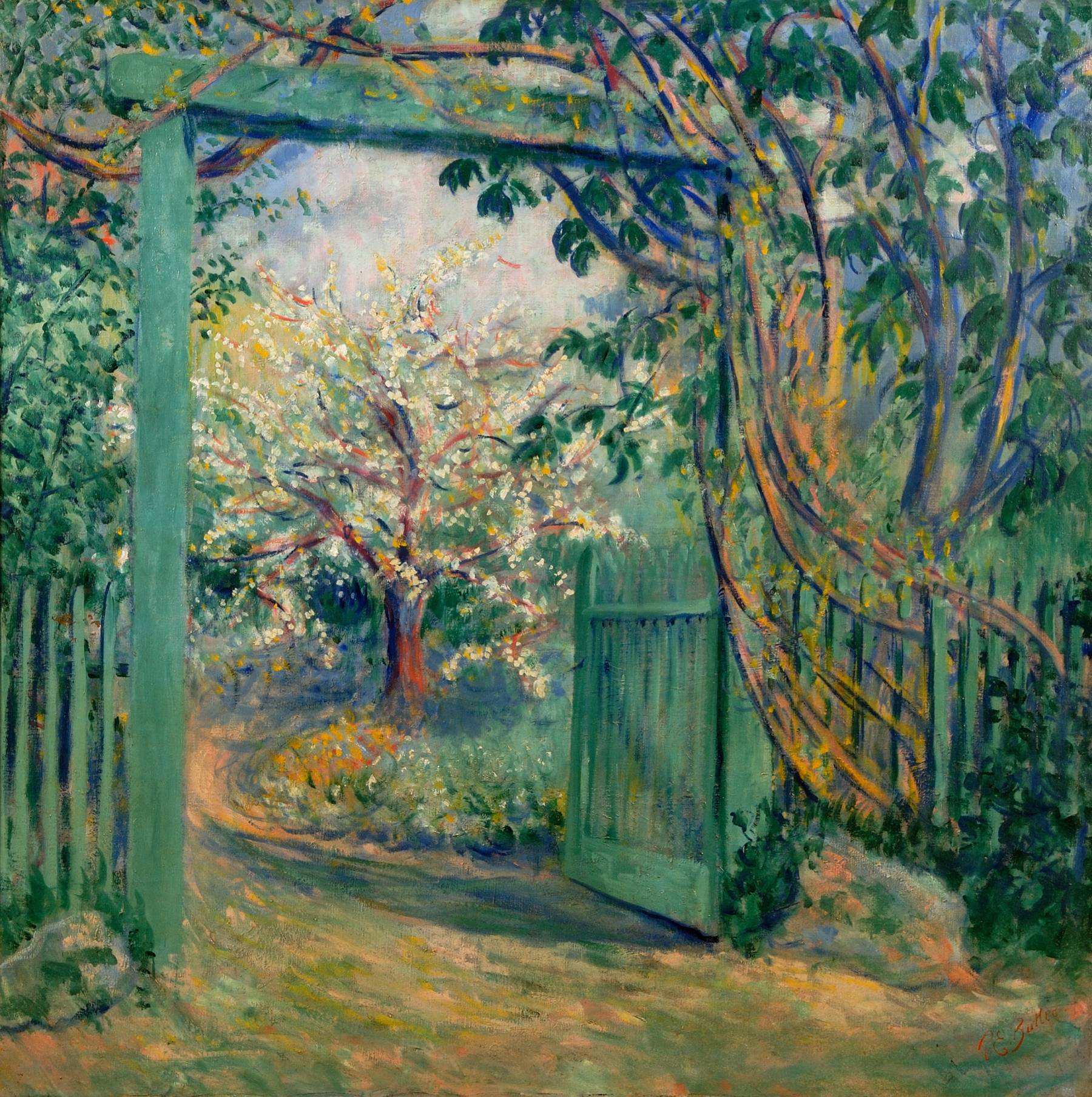Hiramatsu Reiji
(born in Tokyo, 1941)

Hiramatsu Reiji, contemporary Japanese artist, explores the Japonism of Claude Monet.
Painter of landscape and nihonga
Hiramatsu Reiji was born in Tokyo in 1941. He grew up in Nagoya. His birth name is Kunio. He changed it to Reiji in 1966 to celebrate the healing of his son Rei, who suffered from a heart disease.
As a child, Hiramatsu showed a gift for drawing and won numerous competitions. He decided to become of nihonga painter when he saw the workof the great painter Kawabata Ryûshi.
By filial duty, Hiramatsu enrolled at Aichi University, in the Law and Economics section, while continuing to paint. Until the age of forty, he worked many small jobs to feed his family, and he did not always have the means to buy the precious pigments of nihonga, nor the necessary space to create large paintings.
Hiramatsu Reiji is, above all, a landscape painter. He depicted the Japanese countryside through the seasons, South Korea’s hilly landscapes under dark skies, but also the skyscrapers of Tokyo and New York.
The discovery of Claude Monet’s Water Lilies
During a trip to Paris in 1994, on the occasion of a personal exhibition at the JAL gallery, Hiramatsu discovered Monet’s Water Lilies at the Musée de l’Orangerie. He had entered the museum on a whim and stayed a long time in front of the huge canvases. They felt like Japanese paintings to him.
Fascinated and moved, Hiramatsu wanted to understand Monet’s passion for Japanese art. He followed in his footsteps, visited his house in Giverny and his garden, which he drew at length. Back in Japan, he began to compose a large folding screen, using gold for the reflections of light on the surface of the pond. Since then, Hiramatsu has continued this dialogue with Monet, in an approach he describes as “the return of Japonism to Japan”. In 2013, the Musée des impressionnismes Giverny exhibited his work and brought a large selection of his works into its permanent collection : panels and screens that show the water lily pond over the seasons, and sometimes the impossible encounter of these, as in compositions where the spring petals of the cherry tree and the red leaves of the Japanese maple fall on the water lilies, flowers of the summer.
The museum
About us
See more

The museum
The garden
See more


